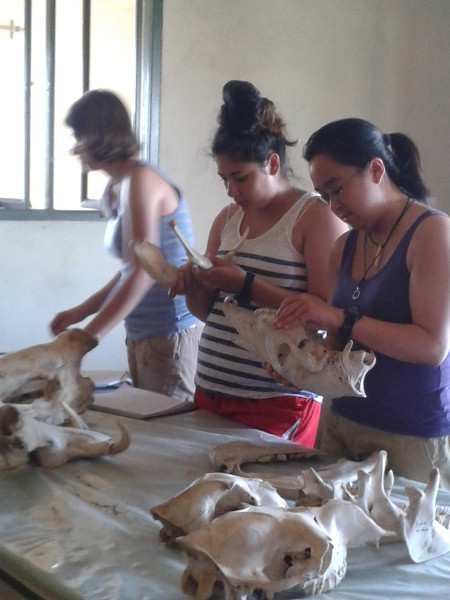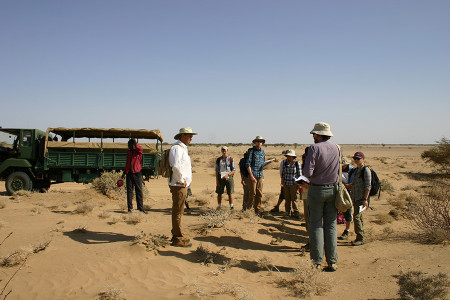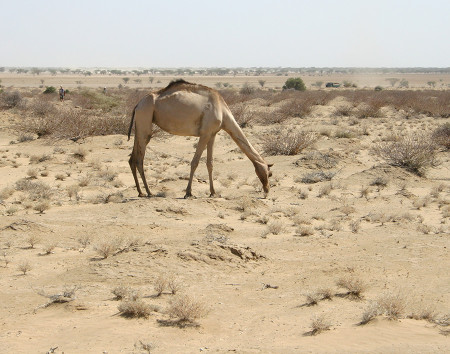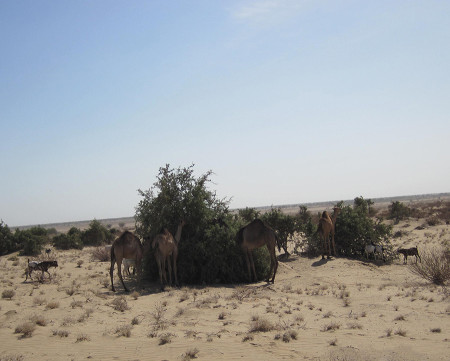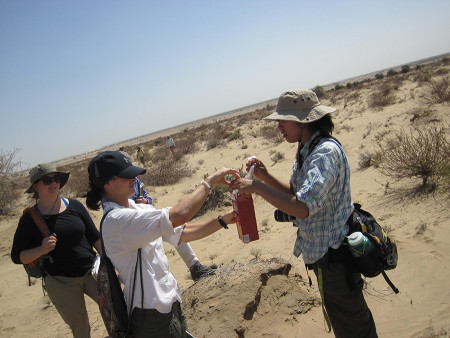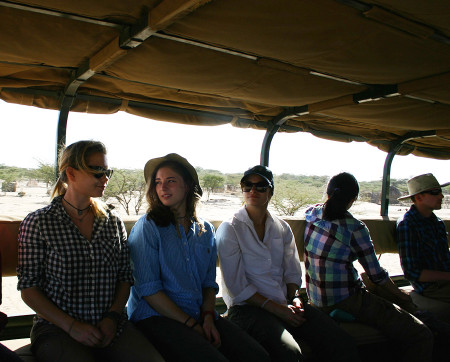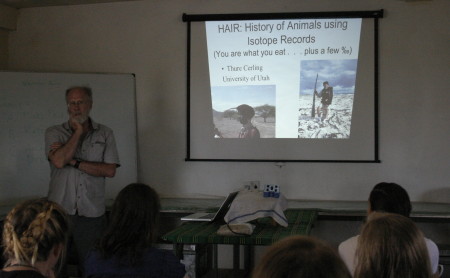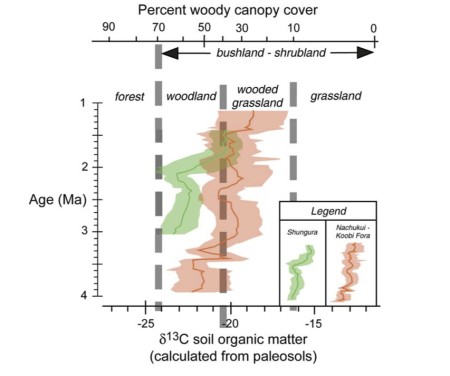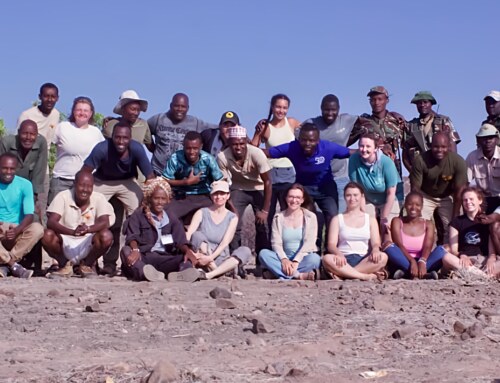Before examining fossilized bones and ancient life, it is important to look at the anatomy of modern mammals. Our next activity looked at skulls, limbs, axial skeletons, and teeth of various carnivores, omnivores, and herbivores in present-day Africa.
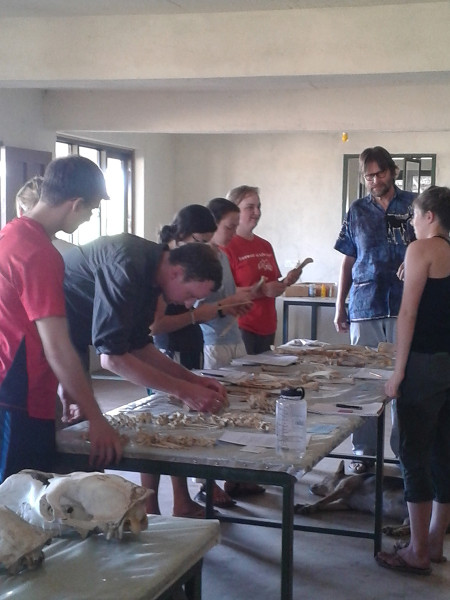
Dr. Fortelius listens as Larisa and Page discuss limb anatomy.
Mike appears to be more interested in the axial skeleton of the goat.
PART 2 – Animals and Food
Now that the students have looked a bit at the anatomy of different mammals from Africa, we decided to visit some camels and goats to study the type of plants they eat and how they chewed their food. Our Ecology professor from the last module, Dr. Dino Martins, joined us in the field to help us identify the variety of plants on the Turkana landscape.
Why did we look at modern animals and plants if this is a paleontology and paleoecology class?
PART 3- Stable Isotopes
On Monday, we were treated with a guest lecture by Isotope Geochemist, Dr. Thure Cerling, from the University of Utah. In addition to conducting stable isotope research on every continent, Dr. Cerling has worked in the Turkana Basin for 40+ years!
In his first lecture, Dr. Cerling discussed his isotope research on hair and how this can indicate the type of foods in the diet of a horse, elephant, and human.
Like modern hair, fossil tooth enamel can also reveal the diet of various animals. Combine this information with animal teeth research by Dr. Fortelius, stable isotope record of ancient soil carbonates by Dr. Cerling, and the marine record of climate and this allows us to determine the paleoecology of an area.

